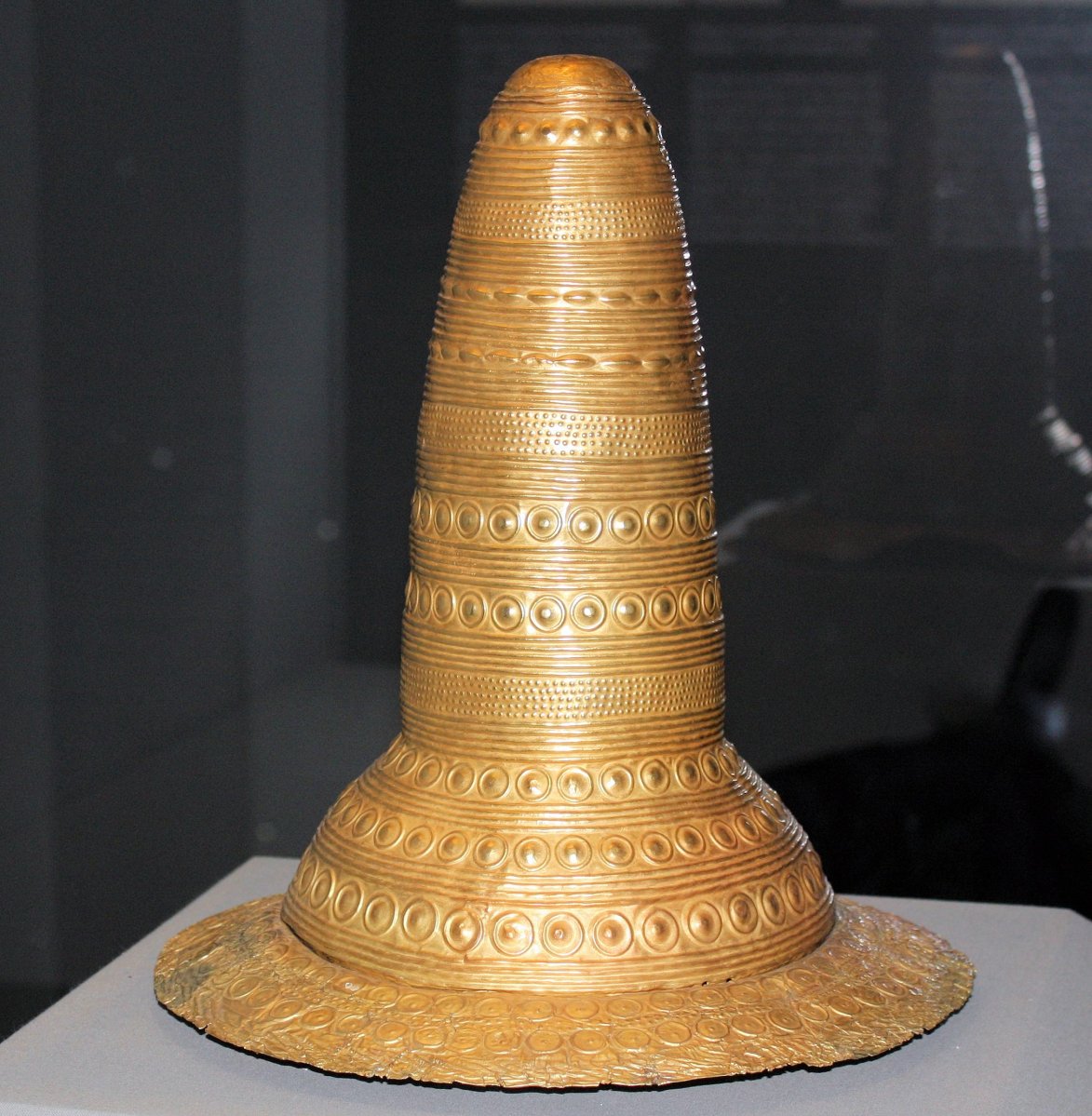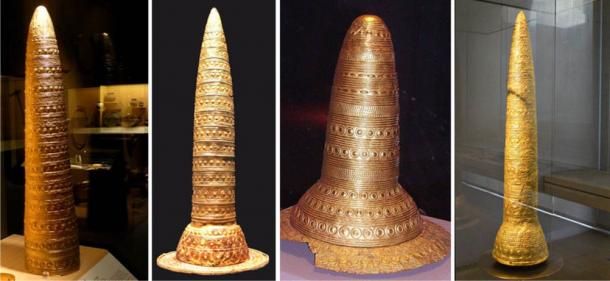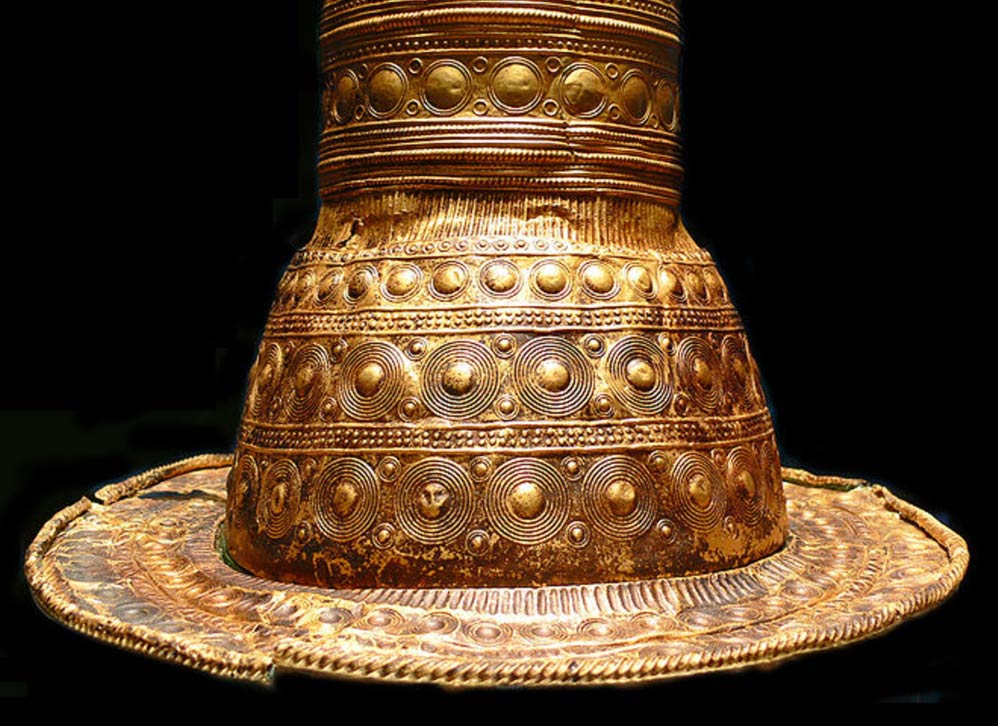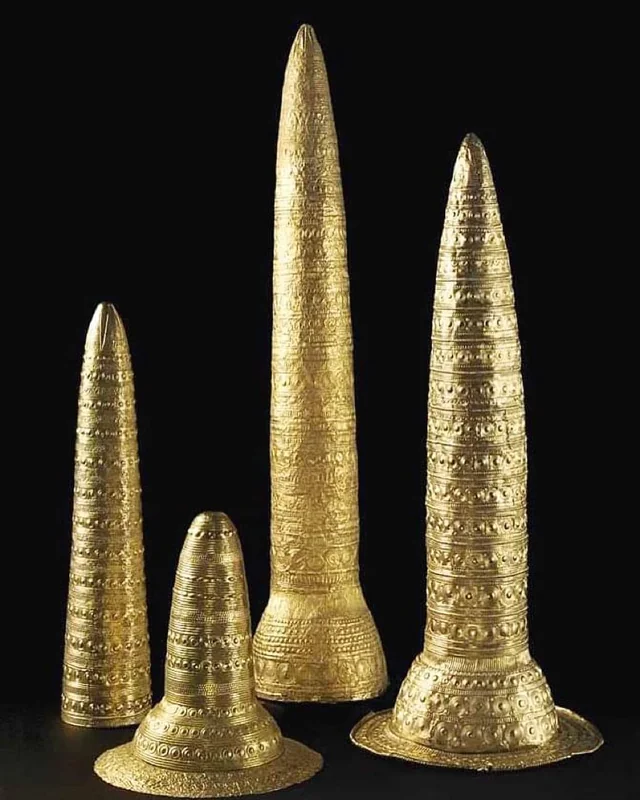Throughout history, relics and artifacts have played a crucial role in unlocking the mysteries of our ancestors’ lives, beliefs, and abilities. Occasionally, a discovery emerges that challenges our understanding of ancient civilizations and offers new insights into their world. One such extraordinary find is the set of four cone-shaped golden hats from the Bronze Age. These mysterious relics, discovered in different locations across Europe, have left historians and archaeologists puzzled for decades.
The Discovery of the Four Golden Hats

The four golden hats were uncovered in different locations and at different times, yet they share remarkable similarities in size, shape, design, and construction. Their conical form bears a striking resemblance to the classic image of a witch’s or wizard’s hat, leading to speculation that they were worn by individuals who held such positions. The hats are intricately engraved with symbols that may have been used to make agricultural or astronomical predictions, possibly elevating the wearer to a divine status in the eyes of their community.
The Locations and Characteristics of the Golden Hats

The four gold hats are rare archaeological finds dating back to the Bronze Age, a period spanning from 3300 to 700 BC. These hats appear to have been crafted during the middle of this era, with estimated dates ranging from 1400 to 800 BC. Despite being discovered over a period of 160 years and in different parts of Europe—three in Germany and one in France—the hats exhibit striking similarities, while also showcasing unique features.
- The Golden Hat of Schifferstadt: The first hat was discovered in 1835 in Schifferstadt, Germany. Known as the Golden Hat of Schifferstadt, it was unearthed by a farmer who found it intentionally buried. Standing at 29.6 cm tall, it is the shortest of the four hats. The hat is divided into bands running the full length, each adorned with intricate designs, including circles, discs, and eye-like shapes. It is believed to have been created between 1400 and 1300 BC.
- The Avanton Gold Cone: The second hat, discovered in 1844 in Avanton, France, is known as the Avanton Gold Cone. Unlike the others, it is missing a brim, though signs of damage suggest it once had one. This cone stands at 55 cm and features repeated circle symbols along its bands. The Avanton hat is thought to have been crafted between 1000 and 900 BC.
- The Golden Cone of Ezelsdorf-Buch: The tallest of the four, the Golden Cone of Ezelsdorf-Buch, was found near Ezelsdorf, Germany, in 1953. It stands at an impressive 88 cm and, like the others, is banded with circles, discs, and eye-like shapes. This hat is believed to date back to 1000-900 BC.
- The Berlin Gold Hat: The fourth hat, known as the Berlin Gold Hat, was discovered in the international arts trade in 1995, with its origin speculated to be in southern Germany or Switzerland. Purchased by the Berlin Museum, this hat stands at 75 cm tall and features a similar banded pattern as the other three. It is thought to have been made between 1000 and 800 BC.
The Purpose of the Golden Hats

The true purpose of these golden hats remains a mystery. Despite being found in different locations, scholars have theorized that they served a common function. Early interpretations suggested that the hats could have symbolized fertility due to their phallic shape. Others believed the hats were part of an ancient suit of armor or that they were used as ceremonial vases. Some speculated that the hats were placed upon stakes at worship sites as decorative caps, while others proposed that they belonged to ancient wizards, given their resemblance to traditional wizard hats.

Recent studies by German archaeologists and historians suggest that the hats were indeed worn by individuals who were perceived as “wizards” during the Bronze Age. The engraved symbols on the hats are thought to have been used to track celestial bodies, allowing the wearer to make agricultural predictions, such as the optimal times for planting and harvesting. These individuals, referred to as “king-priests,” were believed to possess supernatural powers due to their ability to predict natural events. The symbols are linked to the Metonic Cycle, a pattern that explains the relationship between the sun and moon, which would have enabled long-term predictions of their cycles.
Conclusion
The discovery of the four golden hats offers a fascinating glimpse into the lives and practices of those who lived nearly three millennia ago. While the ability to predict the movements of the sun and moon was not entirely novel, the decision to express such knowledge on golden hats is a mystery that remains unsolved. As research continues, we may one day uncover the reasons why the “wizards” of the Bronze Age donned these extraordinary golden hats, and what significance they held in the societies of their time. Until then, the golden hats remain a testament to the sophistication and ingenuity of ancient civilizations.
